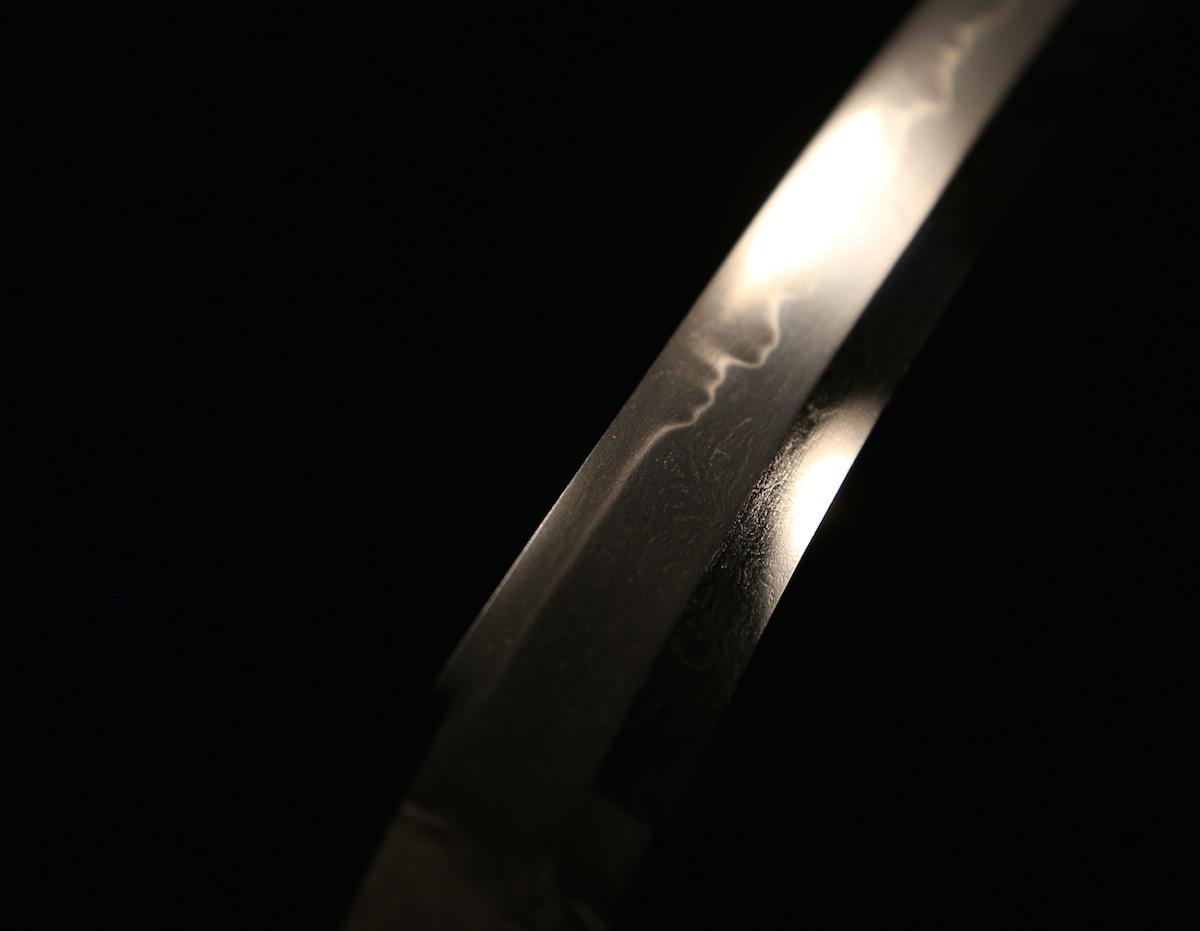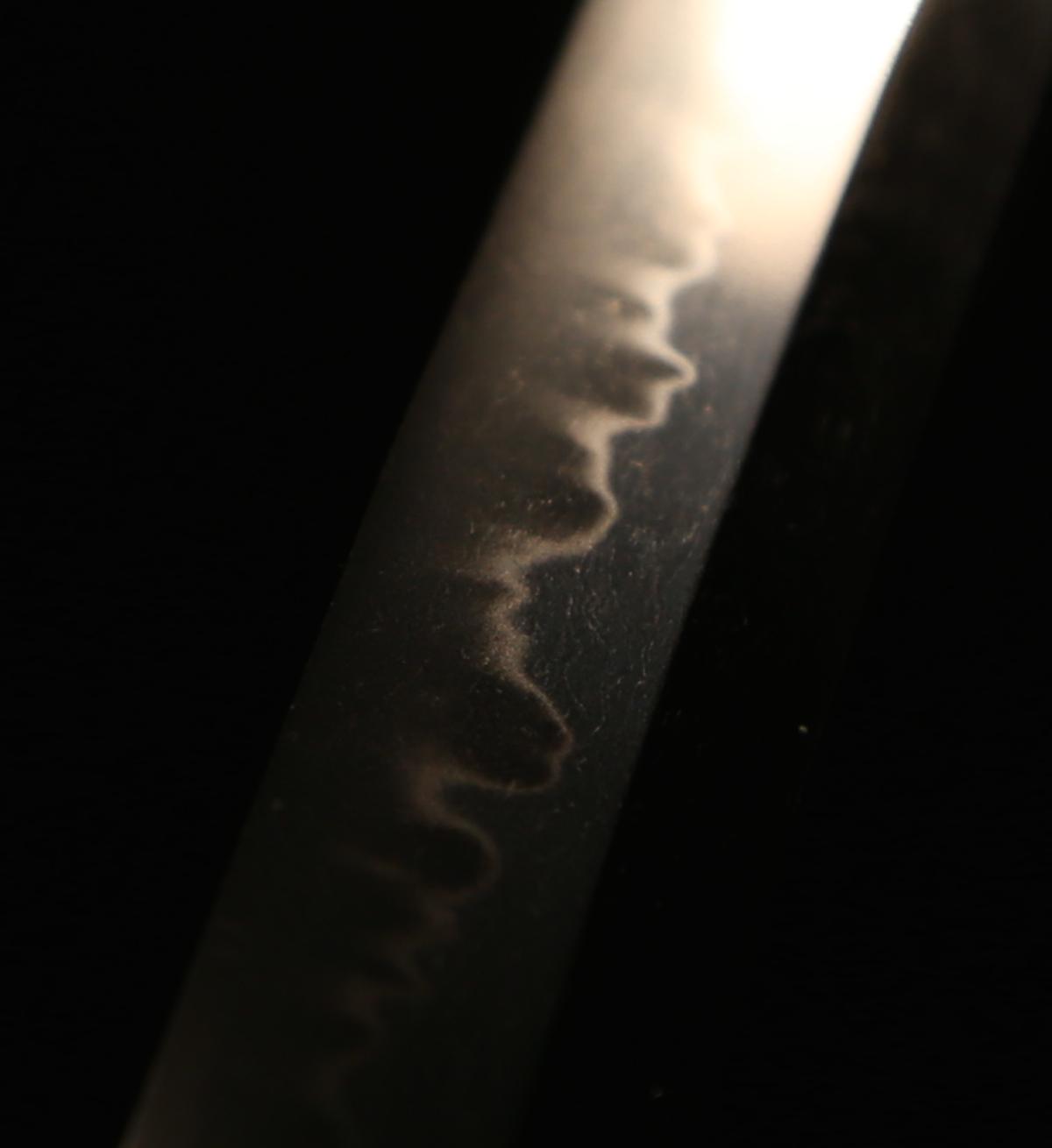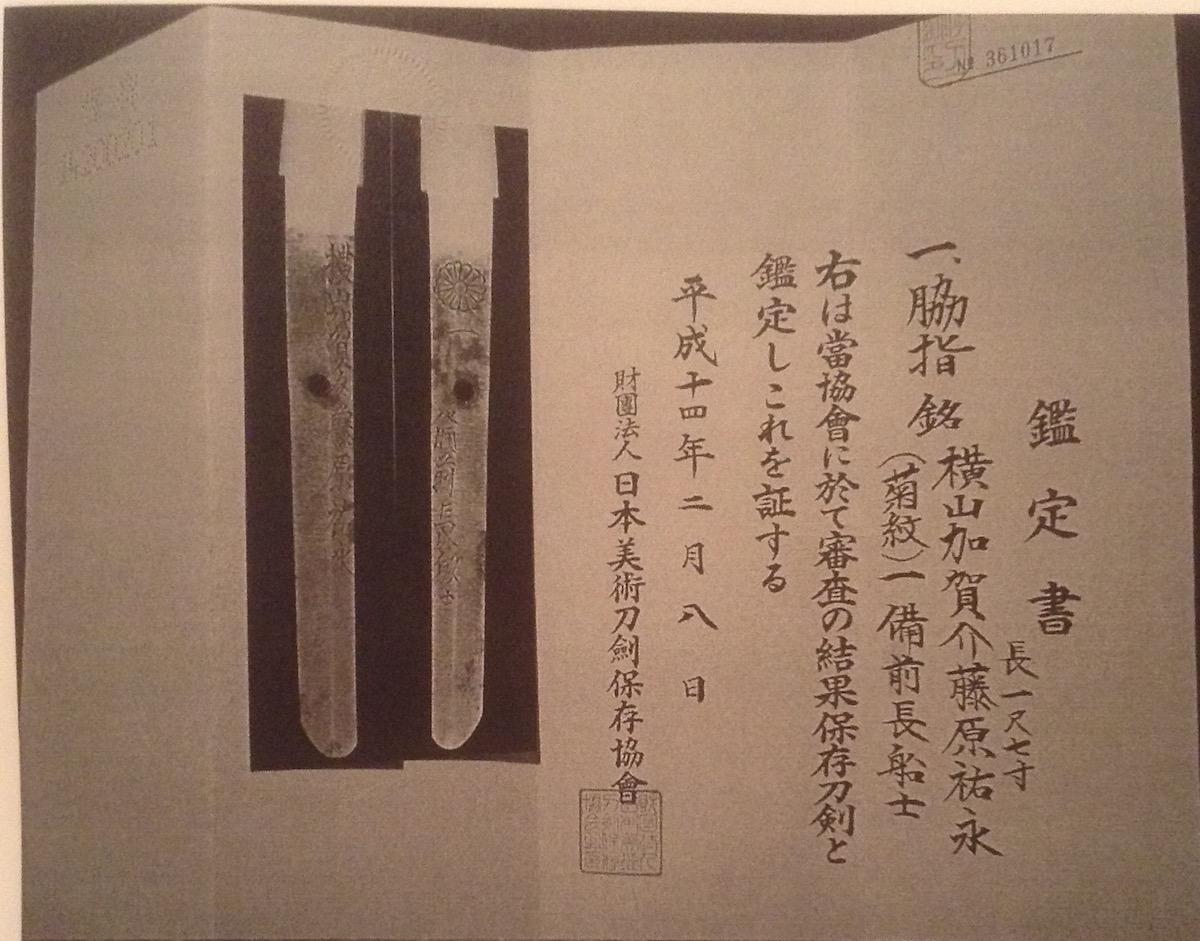Yokoyama Sukenaga Boy’s Sword
A beautifully made boy’s sword forged by one of the prominent smiths of the Shinshinto Period, Yokoyama Sukenaga.
This type of miniature sword is commonly associated as part of samurai boy’s ensemble he would wear for “Boy’s Day”, or “Tango no Sekku” as it was known in the old days, but this usage, and the holiday itself there lay some misconceptions. Tango no Sekku was one of several auspicious holidays originating from around the 10th century with roots back to ancient Chinese fetivals. Over time, the dates, elements, and focus of the celebration changed, so much so that today it is known as “Kodomo no Hi” or children’s day, combining a day for both boys and girls, and also celebrates mothers. However the display of samurai related decorations continues as well as the flying of Koinobori (carp flags or streamers) which are a symbol of both strength and determination. Minature versions of armor, helmets, archery equipment, and swords have been a part of the day since about late Edo or Meiji period and continues today when business put out displays in April for the coming holiday. But the wearing of such swords by boys for the celebration post-dates the making of this particular sword because the maker of this sword, Yokoyama Sukenaga, passed away in 1851. However, in wealthier families, a miniature genuine sword were sometimes commissioned from a sword smith for the boy in the family, and it would in every way be made as a full size sword would be including koshirae in some cases. Quality, signed examples by notable smiths are quite rare and unique, demonstrating both the serious consideration of the family, and the skill of a smith to make an exacting sword in miniature form which is a difficult task.
Images can be deceiving, and it is somewhat difficult to determine that this is actually a miniature sword because it has been scaled down quite skillfully, all the way down to the signature. The Japanese have always had a fascination for miniatures and have garnered a reputation for being experts in miniaturization. This sword (on the left) looks like a full size tachi, but has an overall length of only 65.6 cm! The cutting edge is 50.3 cm, but looking at an image of it side by side of another full size Katana by Yokoyama Sukenaga (on the right) that has a nagasa of 69 cm shows the impressive accuracy of the scale of the smaller sword. Consider also the accuracy of the Chrysanthemum and the mei which are also in scale with proper placement.
The forging is a skillfully knitted mokume with areas of itame. The hamon is the hallmark style of bright nioideki choji midare with full lobes and deep ashi inserted throughout with a sugu yakidashi which is another feature of Shinshinto Yokoyama works. The boshi is in komari with short kaeri. The steel has a lovely color and luster. It is in high quality sashikomi polish that illustrates the work perfectly.
- Nagasa: 50.3 cm
- Motohaba: 2.2 cm
- Kasane: 6.25 mm
This sword earned an NBTHK Hozon Kanteisho in February of 2002, and I have an image shown of the paper that was issued, the physical paper has been lost. In any event, it is clearly evident that the sword was found to be a genuine work of Yokoyama Sukenaga.
It is in a lovely “tiger striped” honoki shirasaya, with a nice gold foiled single piece habaki. This is an excellent opportunity to own a unique and rare example of a highly regarded Shinshinto maker.
SOLD






